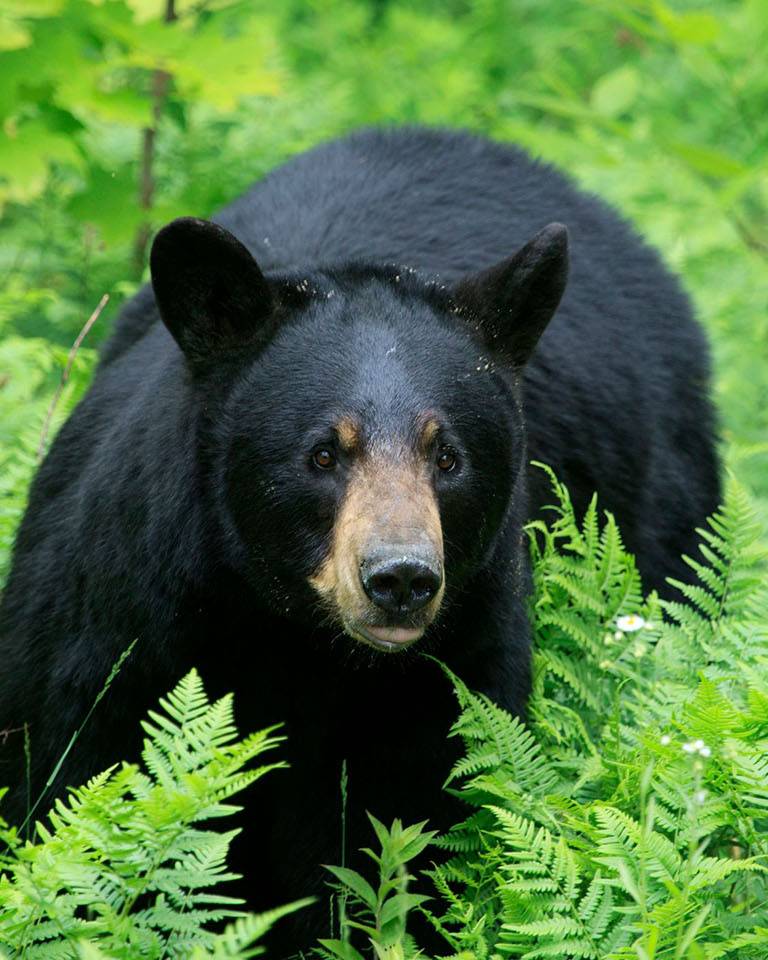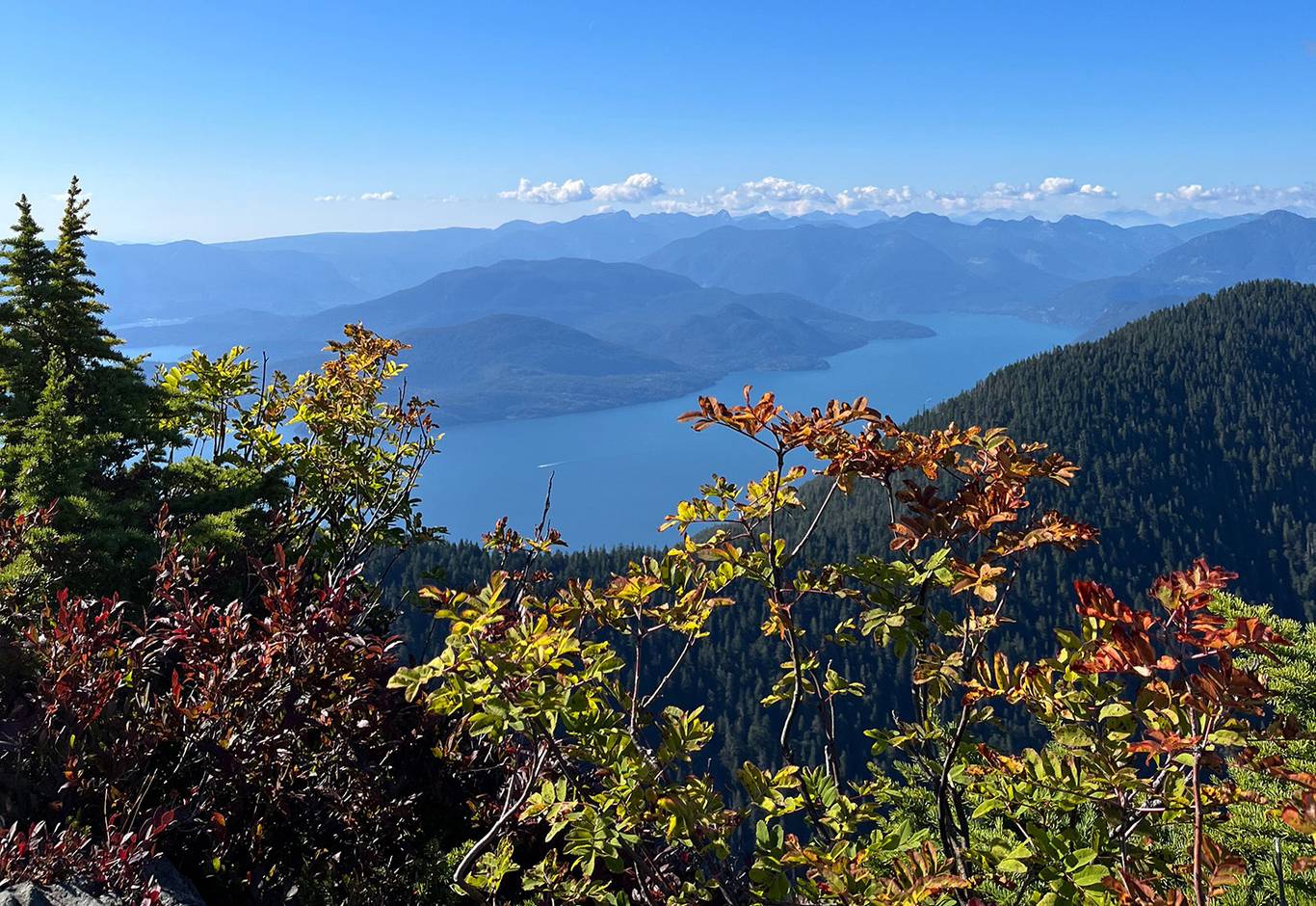Nature & Wildlife
Experience Cypress Mountain's beauty and diverse wildlife—can you spot them all?
Birds of Cypress Mountain
At least 127 bird species have been reported at Cypress Mountain. Can you spot them all? Use this checklist on your next visit to Cypress Mountain!
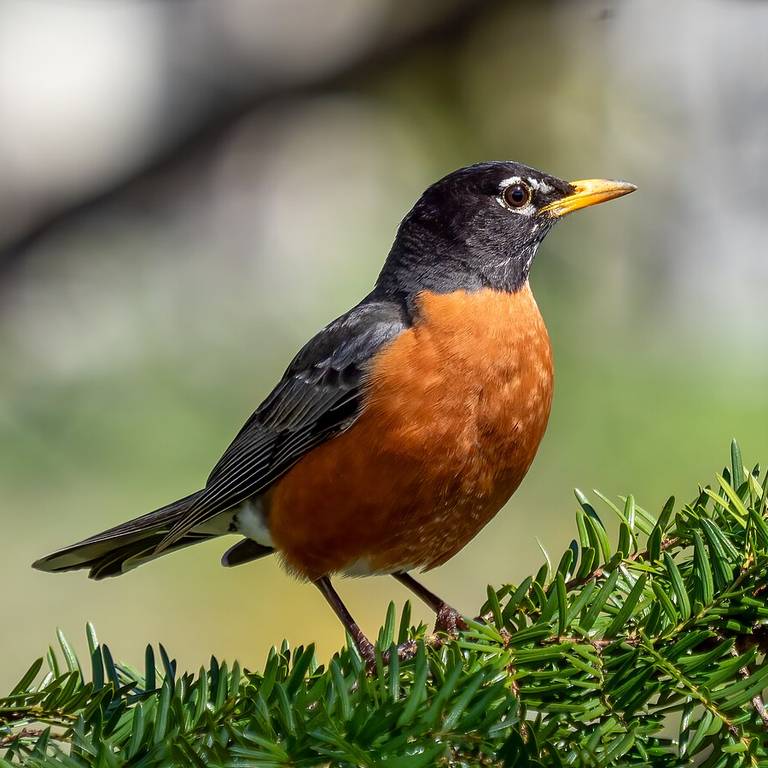
American Robins
Robins rely heavily on fruit availability during winter months. Their breeding habitats include forests, woodlands, suburban gardens, lawns, parks, and farms. As partial migrants, they are often found in woodlands with berry-bearing trees.
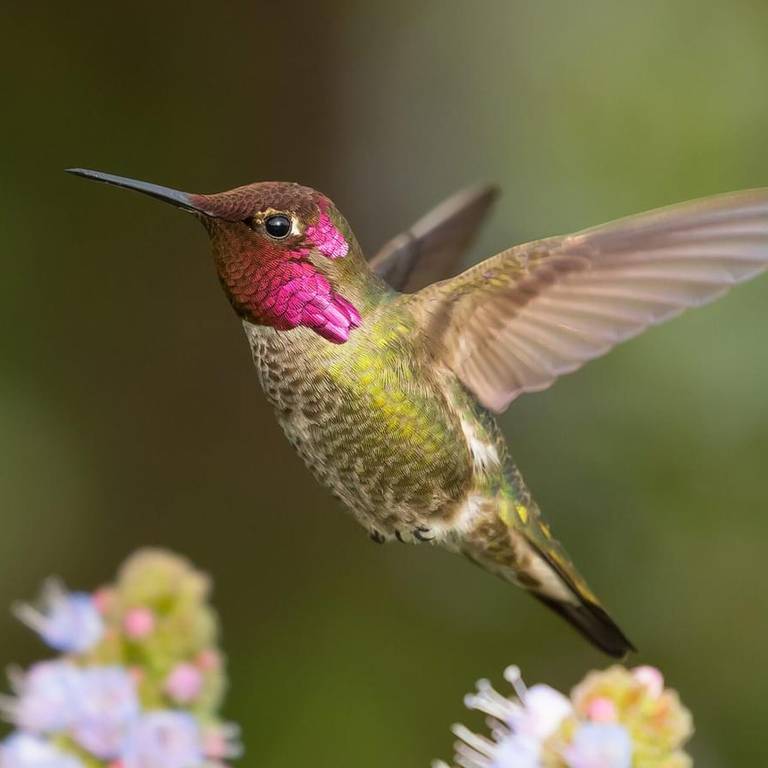
Anna's Humming Bird
Anna's Hummingbird, a medium-sized species from the family Trochilidae, is named after Ana Masséna, Duchess of Rivoli. Native to the western coastal regions of North America, it originally bred only in Northern Baja California and Southern California in the early 20th century.
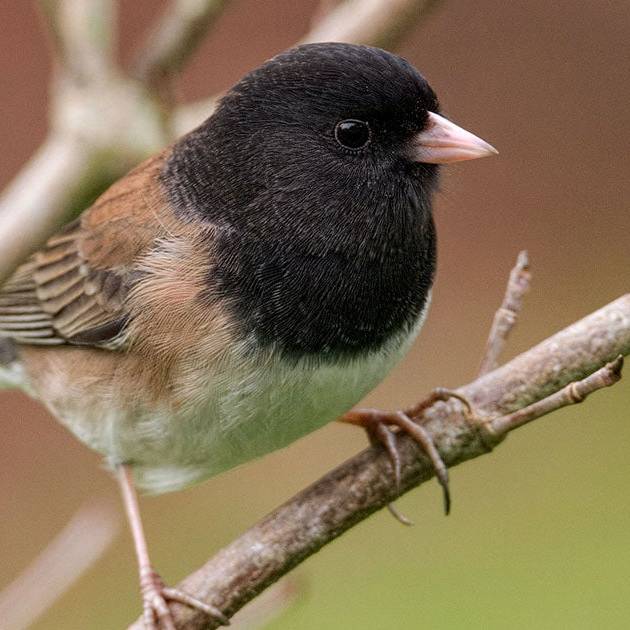
Black Capped Junco
The dark-eyed junco is a species of junco, a group of small, grayish New World sparrows. This bird is common across much of temperate North America and, in summer, ranges far into the Arctic. It is a very variable species, much like the related fox sparrow, and its systematics are still not completely untangled.
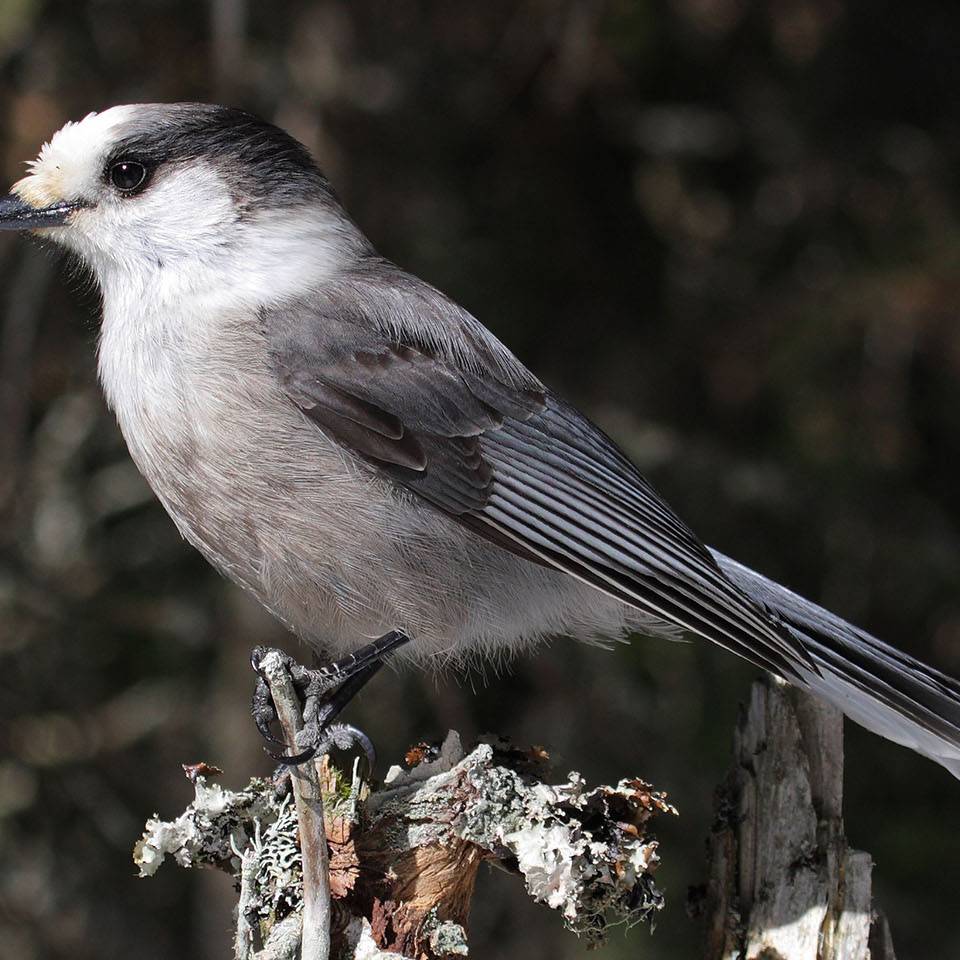
Canadian Gray Jay
The Canadian jay, also known as the gray jay, grey jay, camp robber, or whisky jack, is a passerine bird of the family Corvidae. It is found in the boreal forests of North America, ranging north to the tree line and in the Rocky Mountains' subalpine zone, south to New Mexico and Arizona.
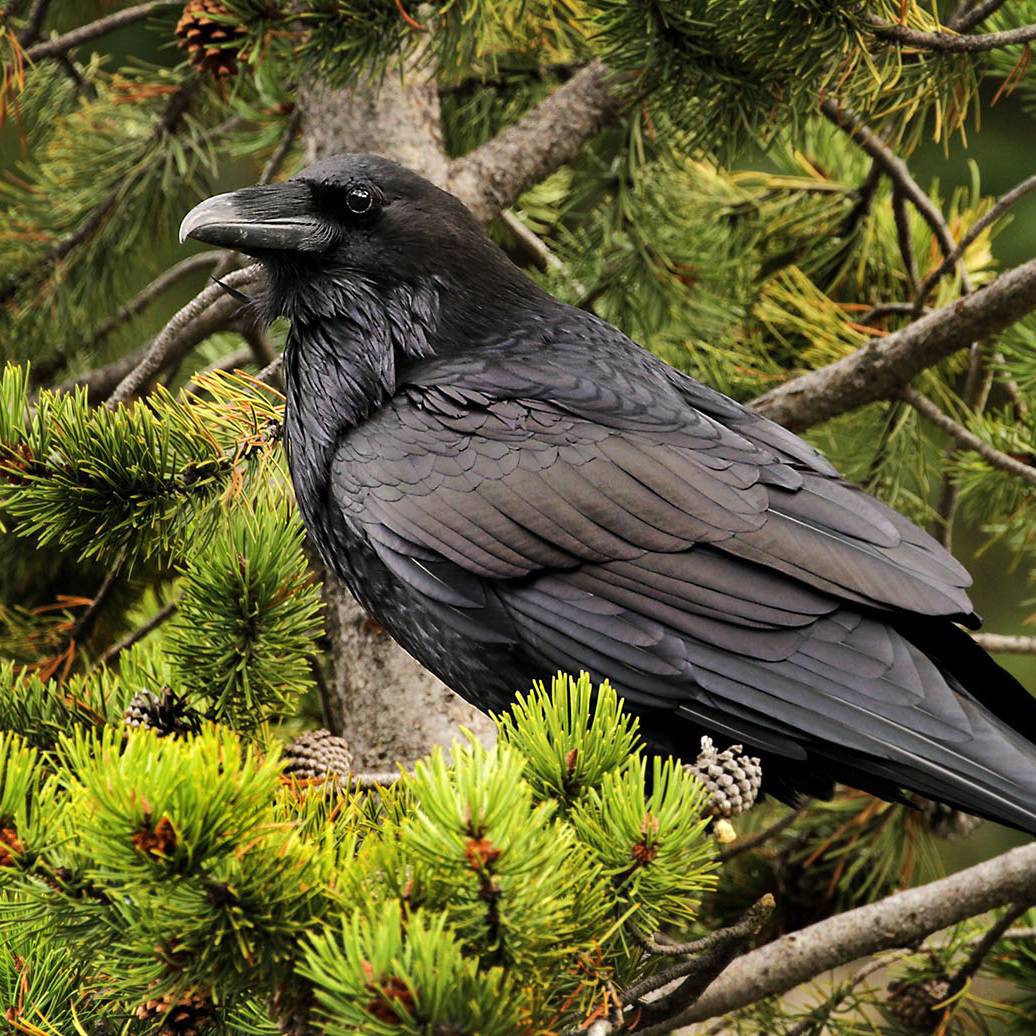
Raven
The common raven, also known as the western raven or northern raven when discussing the raven at the subspecies level, is a large all-black passerine bird. Found across the Northern Hemisphere, it is the most widely distributed of all corvids.

Red Breasted Sap Suckers
Red-breasted sapsuckers drill holes in trees to drink sap and eat insects attracted to it. This woodpecker breeds in a wide range of habitats, including coniferous forests, select deciduous forests, and areas along rivers. It prefers habitats with dead trees.
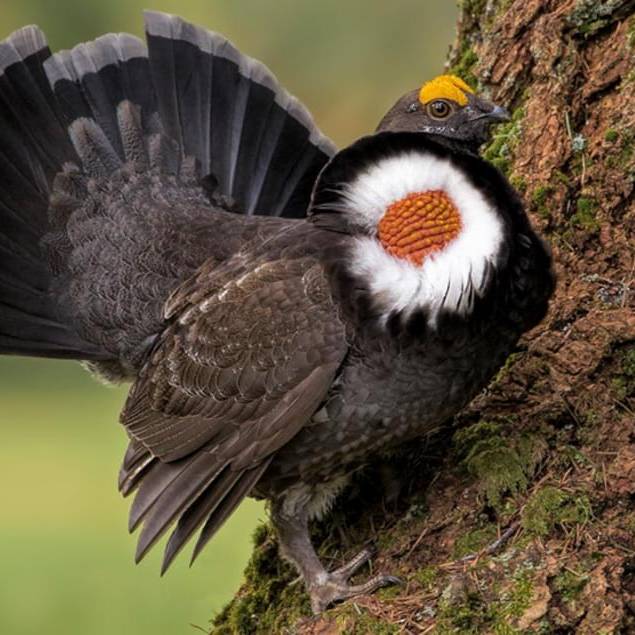
Sooty Grouse
The Sooty Grouse is a forest-dwelling grouse native to North America's Pacific coast ranges. It is closely related to the dusky grouse, which was previously considered a single species known as the Blue Grouse. Adults have a long, square tail that is light gray at the end.
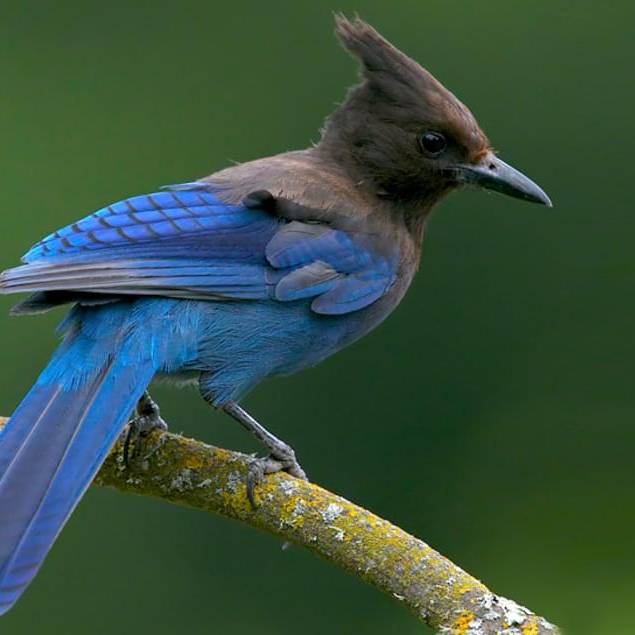
Steller Jay
The Steller Jay is a bird native to western North America and the mountains of Central America. It is closely related to the blue jay found in eastern North America. It is also known as the long-crested jay, mountain jay, and pine jay. It is the only crested jay west of the Rocky Mountains.

Turkey Vulture
The turkey vulture generally forages and migrates over mixed farmland and forest. It prefers to nest in forested or partly forested hillsides with hidden ground protected from disturbance. They roost in large trees, such as cottonwoods, on rocky outcrops, and power line transmission towers. Some turkey vultures winter in urban areas and near landfills.
Start Exploring
Cypress Mountain is home to a rich variety of plants, from vibrant wildflowers to delicate ferns—there’s something for everyone to uncover. Learn more about the diverse plant life on Cypress Mountain.
Plants of Cypress Mountain
The park is also home to many fungi species, many of which are mycorrhizal with trees. In this relationship, the trees supply carbohydrates to the fungi, while the fungi provide trace elements and water to the trees, benefiting both groups.
Many fungi thrive in the moist environment of the forests, while others prefer the open meadows—most species fruit during the damp weather of spring and fall.
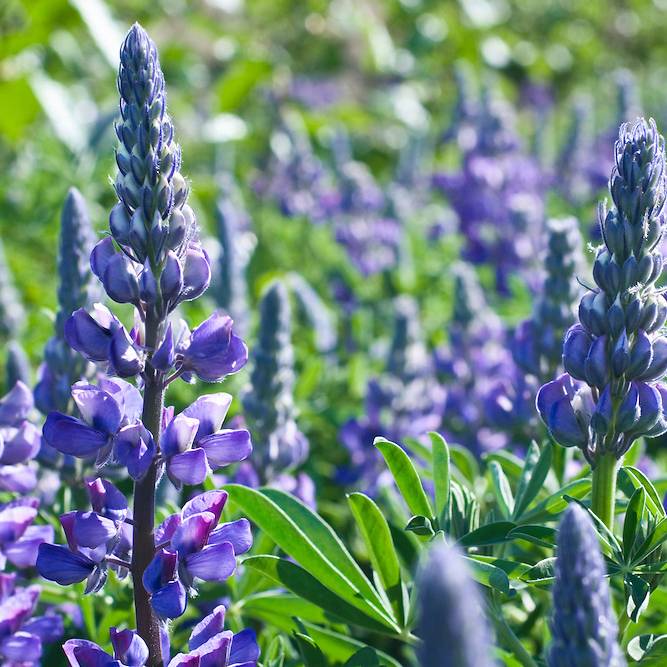
Arctic Lupine
Arctic Lupine (Lupinus arcticus)
General: The Arctic lupine is a bushy herb, standing 15 to 50 cm tall, with hollow, upright stems covered in long, silky white hairs.
Leaves & Twigs: The leaves consist of six to eight pointed leaflets that resemble the fingers of a hand. They grow from the base of the plant on long stalks.

Bunchberry
Cornus canadensis is a flowering plant in the dogwood family native to Eastern Asia, the northern United States, Colorado, New Mexico, Canada, and Greenland.
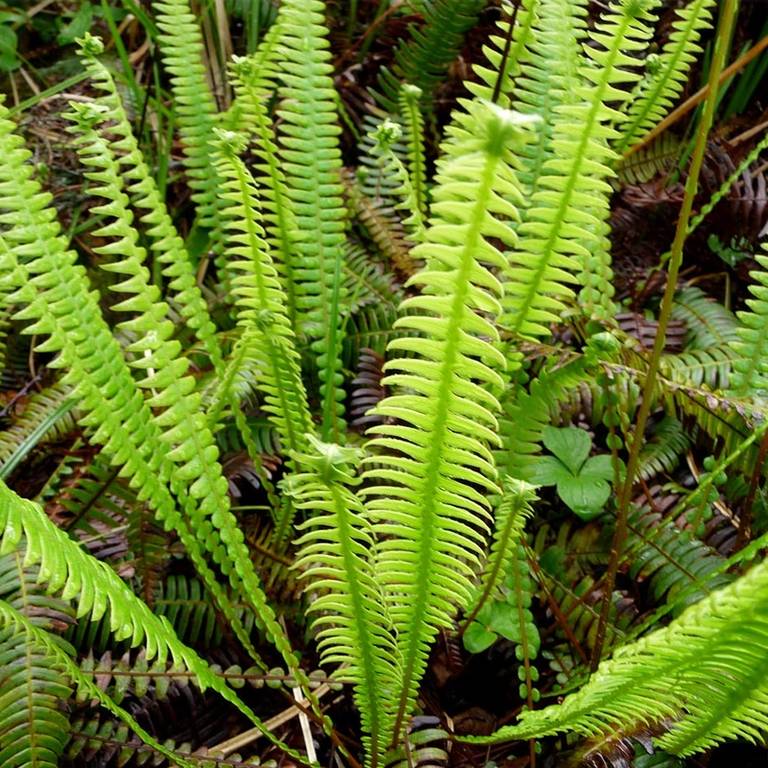
Deer fern
These are commonly seen along the park's moist forested trails, as they need moisture to survive. In some areas, this evergreen fern is an important food for deer.
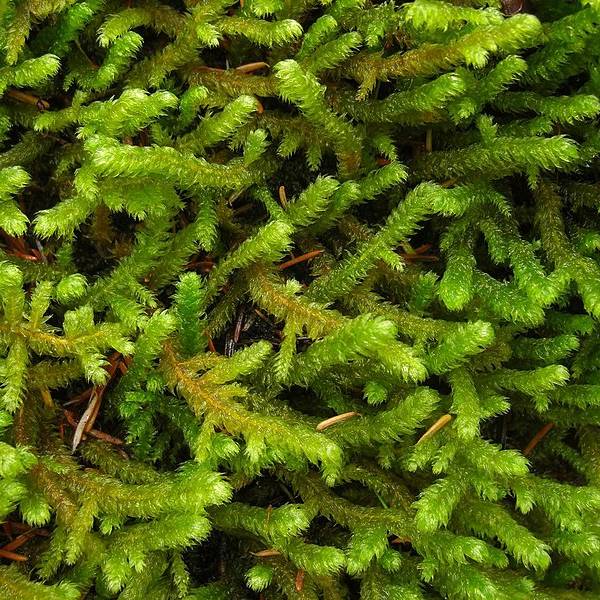
Pipecleaner Moss
This yellow-green creeping moss forms large mats on the forest floor in subalpine old-growth forests.

Running Clubmoss
The bright green horizontal stems of running clubmoss can be seen creeping great distances along the ground in open areas. Their small, stalked fruiting bodies stand upright like little trees or tuning forks.
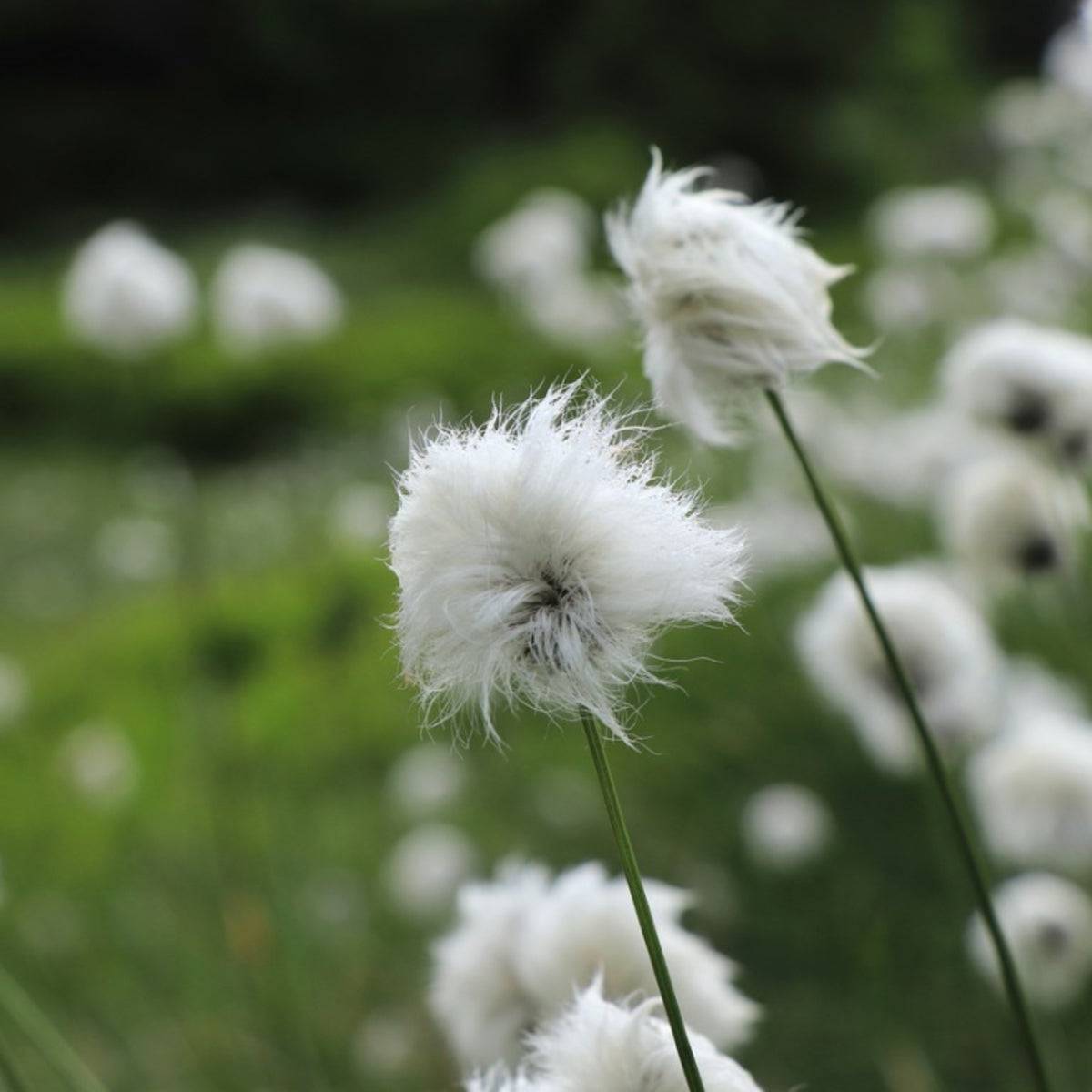
Narrow-leaved cotton-grass
This sedge (sedges have edges; feel the stems) grows in wet meadows, dotting the landscape with white cotton-ball spikelets. This yellow-green creeping moss forms large mats on the forest floor in subalpine old-growth forests.

Copperbush
Copperbush is a common species in British Columbia, found west of the Coast-Cascade Mountains. Its range extends north to southern Alaska and south to northwestern Oregon.

Mountain Spirea
Spiraea splendens is a shrub of the rose family, native to the western mountains of North America, from California to British Columbia. It is commonly known as dense-flowered spiraea, rose meadowsweet, rosy spiraea, subalpine spiraea, and mountain spiraea.
Trees of Cypress
Cypress Provincial Park is in the Coastal Western Hemlock and Subalpine Mountain Hemlock zones. The primary tree species include western and mountain hemlock, amabilis fir, and yellow-cedar (also known as yellow-cypress, for which the park is named). Western white pine and some Douglas fir can also be found here. Naturally caused forest fires are rare in the subalpine areas, where snow can linger for over half the year, allowing many trees to thrive for over 1,000 years. The park boasts impressive old-growth stands featuring some of the largest recorded trees for their species in British Columbia.
While the trees may not be as ancient as the forest, many of the park’s yellow cedars are around 1,000 years old, with some potentially much older. The Roadside Yellow-Cedar is known to be over 1,200 years old and is one of the largest known yellow-cedars in BC, boasting a massive, slow-tapering trunk that makes it the largest tree overall in the park. This tree is located adjacent to Cypress Bowl Road, just before the turn to the cross-country ski area. The Cabin Lake Fir, found on the steep north slopes of Black Mountain, was one of the largest amabilis firs in the world, measuring 47.0 m high with a circumference of 7.32 m. Unfortunately, this tree was reported dead in March 2015. Other notable trees listed on The BC Big Tree Registry include the Hollyburn Giant yellow-cedar, which is now a snag, and a mountain hemlock on Hollyburn, which holds the record for the largest circumference for its species.
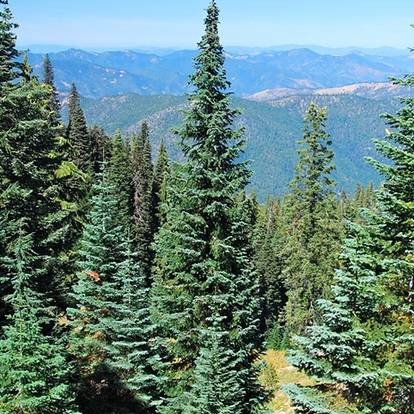
Amabilis Fir
This tall, straight tree is characterized by its dense, cone-shaped crown.

Yellow Cedar
This tree features branches that spread out and droop, with foliage ranging from dark green to yellow-green in colour.
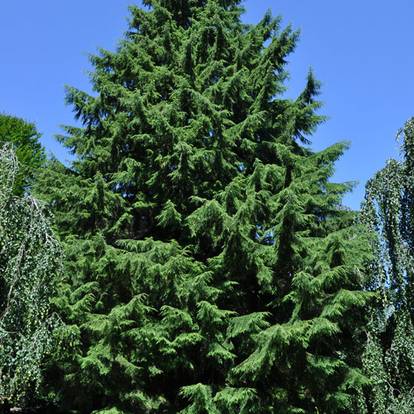
Western Hemlock
This tree is characterized by short, flat needles and cones that are less than 3 cm long.
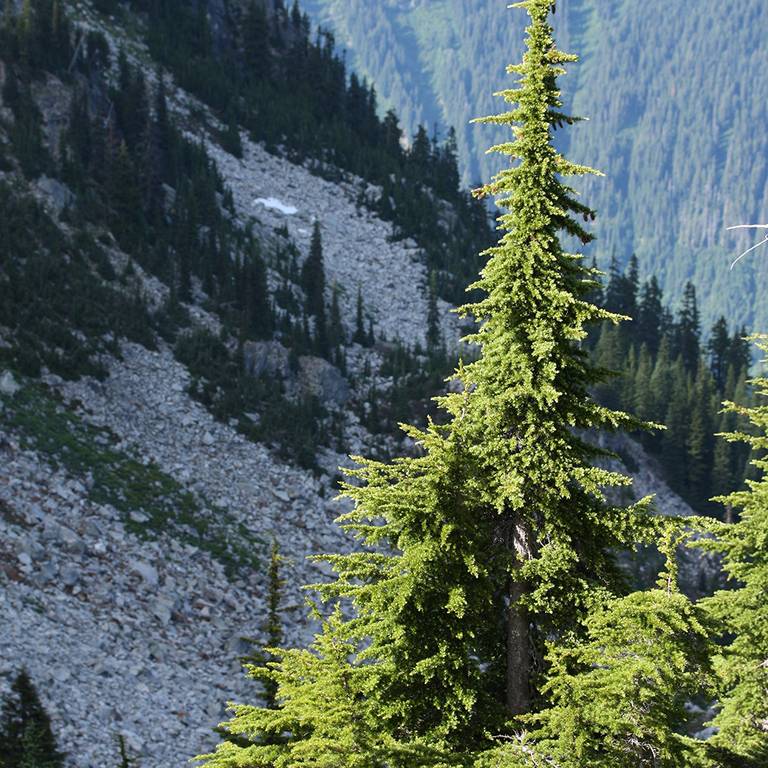
Mountain Hemlock
This tree is typically under 30 m tall and features a slightly droopy top, thriving in subalpine regions.

Western Red Cedar
The Western red cedar can reach heights of up to 60 m and is characterized by small 1 cm cones and reddish-brown bark.
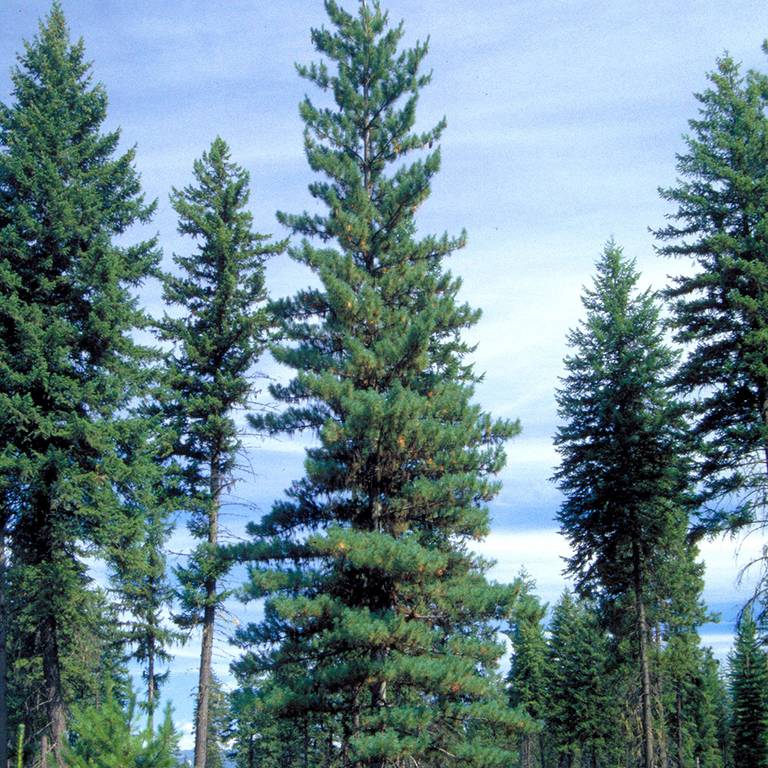
Western White Pine
This tree can reach heights of up to 60 m and is distinguished by its short crown and long cones, which measure between 10 to 25 cm.
Be Bear Ready
Stay safe by learning how to prevent encounters and what to do if you meet a bear.
